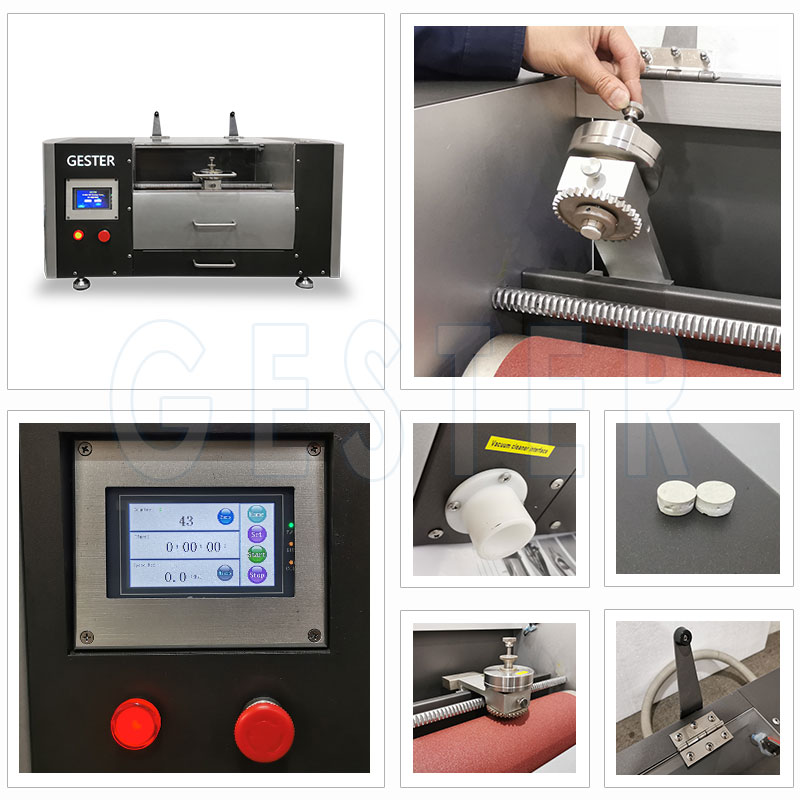Sotto una determinata pressione e area di contatto, il campione forma un certo angolo con la carta vetrata e si determina la sua capacità di abrasione causata da un certo livello di carta vetrata. Si stende la carta vetrata all'esterno della superficie del rullo. Il campione viene premuto contro il rullo con la carta vetrata, che provoca uno spostamento laterale del campione lungo il rullo. L'abrasione si verifica sotto l'altro lato dei campioni cilindrici, misurando la perdita di massa del valore del campione e calcolando l'entità dell'usura in base alla densità del campione.
